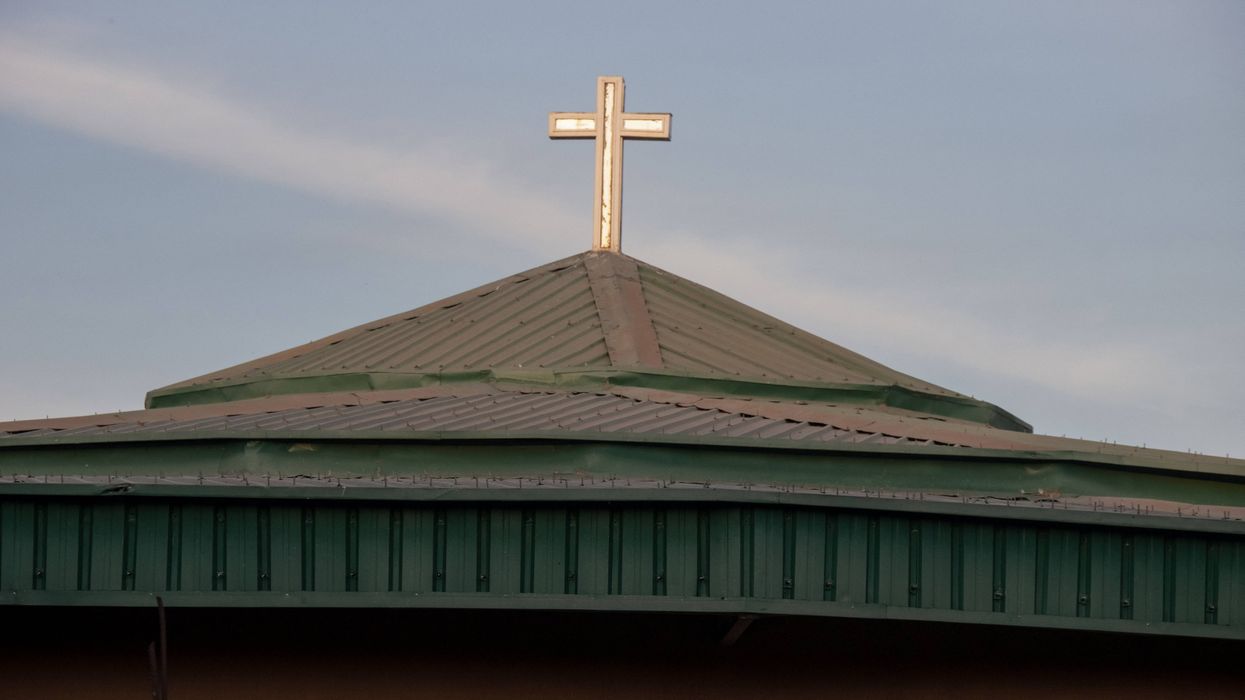May, 11 2015, 02:15pm EDT

New Analysis Shows Brunner Island Coal Plant Is Region's Single Worst Smog Polluter
Pennsylvania Power & Light's (PPL) Brunner Island coal-fired power plant is the single largest source of dangerous smog-causing pollution in Southeastern Pennsylvania, according to a new analysis of pollution data released today by the Sierra Club. The findings highlight the need for strong clean air safeguards from the Brunner Island coal-fired power plant and come as several environmental organizations plan to hold a community forum on proposed clean air protections at 7PM on Monday night at the Hamilton Health Center in Harrisburg.
HARRISBURG, Pa.
Pennsylvania Power & Light's (PPL) Brunner Island coal-fired power plant is the single largest source of dangerous smog-causing pollution in Southeastern Pennsylvania, according to a new analysis of pollution data released today by the Sierra Club. The findings highlight the need for strong clean air safeguards from the Brunner Island coal-fired power plant and come as several environmental organizations plan to hold a community forum on proposed clean air protections at 7PM on Monday night at the Hamilton Health Center in Harrisburg.
According to pollution data from the Department of Environmental Protection (DEP), the Brunner Island coal-fired power plant is the single-largest stationary source of dangerous smog-causing nitrogen oxide pollution (NOx) in the region, responsible for nearly a third of all such pollution from facilities in Southeastern Pennsylvania counties including York, Dauphin, Delaware, Lebanon, Lancaster, Chester, Montgomery, Philadelphia, Bucks, Berks, Lehigh and Northampton. In York County alone, the Brunner Island coal-fired power plant was responsible for approximately 70% of this dangerous smog-causing pollution in 2013.
The Clean Air Task Force has estimated that pollution from the plant results in to 50 deaths, 86 heart attacks, and 790 asthma attacks every year.
"My family has lived in the Bainbridge area of the Susquehanna Valley for generations. I've seen too many friends, neighbors, and loved ones suffer with breathing problems, as well as lung and other cancers," said Patricia Longenecker, a resident of Elizabethtown. "The Brunner Island plant has been polluting our air for over 50 years, and it is about time it cleaned up its act and the air we breathe."
This summer, Governor Tom Wolf's Administration will finalize a new standard aimed at limiting smog-causing NOx pollution from coal-fired power plants, the largest source of this type of pollution in the state. A recommendation by the Citizens Advisory Council on the proposed standard is expected later this month. The proposed rule would not require any pollution reductions from the Brunner Island coal-fired power plant outside Harrisburg, which is the only remaining large coal-fired power plant in the state that does not have modern pollution controls to limit dangerous smog-causing pollution.
The chart below compares the percentage of NOx pollution from the Brunner Island coal-fired power plant to all other stationary sources in Southeastern Pennsylvania counties. Source: Pennsylvania Department of Environmental Protection (DEP)

The chart below shows the total amount of NOx pollution from stationary sources, including the Brunner Island coal-fired power plant, in Southeastern Pennsylvania counties. Source: Pennsylvania Department of Environmental Protection (DEP)

"While we applaud Governor Wolf's proposal to reduce pollution from other coal plants in our state, these proposed standards would allow the Brunner Island plant, our region's single worst source of dangerous smog forming pollution, to continue to dump these dangerous emissions into our air without restriction," said Tom Schuster, Senior Campaign Representative for the Sierra Club's Beyond Coal campaign in Pennsylvania. "A family in Southeastern Pennsylvania has as much right to breathe clean air as a family in Pittsburgh. Today's findings show that it's time for Governor Wolf to stand up for clean air in our communities and to close this dangerous Brunner Island loophole for the health and well-being of families throughout the region."
In the American Lung Association's 2015 State of the Air report, which grades each county in the United States based on its levels of smog and soot pollution, thirteen counties earned a failing grade for smog pollution, including Bucks, Chester, Delaware, Lancaster, Lebanon, Philadelphia, and York Counties in Southeastern Pennsylvania. Dauphin, Berks, and Montgomery County each scored a D.
"The recent update to the State of the Air Report again highlights the fact that the air is quite unhealthy throughout most of southeastern Pennsylvania," said Kevin Stewart, of the American Lung Association and a panelist at Monday night's event. "We're calling on state and federal regulators to do everything within their power to protect Pennsylvania families by reducing harmful air pollution, especially in these counties with failing grades."
Two thirds of Pennsylvania residents live in areas that are already failing to meet the current smog standard, including more than 1.2 million seniors, 1.7 million children, and nearly 750,000 asthma sufferers in Pennsylvania whose health is put at risk from smog pollution. In addition, people of color in Pennsylvania suffer from even higher rates of asthma and asthma-related hospitalizations, and are more likely to live in areas with higher levels of smog pollution.
Nitrogen oxide (NOx) emissions are a significant contributor to the formation of smog pollution and are pumped out of vehicle tailpipes and dirty power plants. Doctors compare inhaling smog to getting a sunburn on your lungs. According to the American Lung Association, breathing in smog pollution often results in immediate breathing trouble and long-term exposure is linked to chronic respiratory and lung diseases like asthma, reproductive and developmental harm, and even premature death.
In addition to being a leading cause of smog, NOx pollution also causes fine soot to form in the air. "Fine soot or particulate pollution can lodge deep in the lungs, and it is well known that it can cause a variety of respiratory problems, including lung cancer," said Dr. Craig Jurgensen, member of the Clean Air Board of Central Pennsylvania. "We are now also finding that exposures to soot pollution can cause neurological problems, and may contribute to conditions like autism and Alzheimer's disease." The ALA report ranked the Harrisburg area as 12th worst in the country for year-round particle pollution
The Sierra Club is the most enduring and influential grassroots environmental organization in the United States. We amplify the power of our 3.8 million members and supporters to defend everyone's right to a healthy world.
(415) 977-5500LATEST NEWS
Netanyahu to Press for 'Another Round of War With Iran' in Meeting With Trump This Week
Amid a growing rift between Israel and the White House, one foreign policy analyst says the meeting "will signal whether Washington is prepared to continue underwriting open-ended escalation."
Dec 28, 2025
As Israeli Prime Minister Benjamin Netanyahu heads to Mar-a-Lago to meet with US President Donald Trump on Monday, amid a growing rift with the president and his advisers, reports say he'll seek to push the US back toward war with Iran.
Last week, NBC News reported that at the meeting, "Netanyahu is expected to make the case to Trump that Iran’s expansion of its ballistic missile program poses a threat that could necessitate swift action" and that "the Israeli leader is expected to present Trump with options for the US to join or assist in any new military operations."
"Netanyahu plans to press Donald Trump for US backing for another round of war with Iran, now framed around Iran’s ballistic missile program," said Sina Toossi, a senior fellow at the Center for International Policy. “Netanyahu’s pivot to missiles should therefore be read not as the discovery of a new threat, but as an effort to manufacture a replacement casus belli after the nuclear argument collapsed."
He noted criticisms levied against Netanyahu by Yair Golan, chair of the Democrats, a center-left party in Israel, earlier this week: "How is it possible that last June, at the end of the war with Iran, Benjamin Netanyahu solemnly declared that ‘Israel had eliminated Iran’s nuclear threat and severely damaged its missile array’; and that this was a ‘historic victory’—and today, less than six months later, he is running to the president of the United States to beg for permission to attack Iran again?" Golan said.
Iran is just one of several areas the two will likely discuss on Monday. According to Israeli officials who spoke to the Washington Post, Netanyahu also reportedly wants Trump to "take a tougher stance on Gaza and require that Hamas disarm before Israeli troops further withdraw as part of the second phase of Trump’s 20-point peace plan."
The chief of Israel's armed forces suggested earlier this week that its occupation of more than half of Gaza would be permanent, but walked those comments back after reported behind-the-scenes outrage in the White House. Meanwhile, Trump—invested in his image as a peacemaker—has reportedly balked at Israel's routine violations of the ceasefire agreement he helped to broker in October.
Near-daily strikes have resulted in the death of at least 418 Palestinians, according to the Gaza Media Office. Meanwhile, Israel's continued blockade of humanitarian aid has left hundreds of thousands of people—displaced from homes destroyed by Israeli bombing—to languish in the cold without tents. Desperately needed fuel, food, and medicine have entered the strip at far lower numbers than the ceasefire agreement required.
As Axios reported on Friday, Trump's advisers increasingly fear that Netanyahu is intentionally slow-walking and undermining the peace process in hopes of resuming the war.
Netanyahu also seeks Trump's continued backing of Israel's territorial expansion in Syria. Earlier this month, the Israel Defense Forces (IDF) pushed through a UN-monitored demilitarized zone between Israeli and Syrian-held positions in the Golan Heights, which Israel illegally occupies.
This push into southern Syria went against the wishes of the Trump administration, which feared it could destabilize the Western-backed government that rules in Damascus following the ouster of former President Bashar al-Assad.
Israel has also routinely struck Lebanon in violation of the US-brokered ceasefire it signed with Hezbollah in late 2024, with bombings becoming a near-daily occurrence in December. Last month, the UN reported that at least 127 civilians, including children, had been killed in Israeli strikes since the ceasefire began.
"Netanyahu’s visit unfolds against a backdrop of unresolved fronts, with widening disputes with Washington over the second phase of the Gaza ceasefire, including postwar governance, reconstruction, and Turkish involvement," Toossi said. "At the same time, Israel is seeking greater latitude to escalate again against Hezbollah in Lebanon, an end to US accommodation of Syria’s new leadership, and firm assurances on expanded military aid."
“Taken together, Netanyahu’s visit is less about resolving any single crisis than about postponing strategic reckoning," he continued. "The outcome will signal whether Washington is prepared to continue underwriting open-ended escalation, or whether this meeting marks the beginning of clearer limits on Israel’s regional strategy.”
Keep ReadingShow Less
Khanna Hits Back as Silicon Valley Oligarchs Threaten Primary Challenge Over California Billionaires Tax
"We cannot have a nation with extreme concentration of wealth in a few places, but where... healthcare, childcare, housing, education is unaffordable," the San Francisco lawmaker said.
Dec 28, 2025
US Rep. Ro Khanna defended California's proposed tax on extreme wealth Saturday after a pair of prominent Silicon Valley venture capitalists threatened to launch a primary bid for his California House seat.
The proposal, which advocates are gathering signatures to place on the ballot in 2026, would impose a one-time 5% tax on those with net worths over $1 billion to recoup about $90 billion in Medicaid funds stripped from the state by this year’s Republican budget law. The roughly 200 billionaires affected would have five years to pay the tax.
While higher taxes on the superrich are overwhelmingly popular with Americans, the proposal has rankled many of California’s wealthiest residents, as well as California’s Democratic Gov. Gavin Newsom, who said earlier this month that he’s “adamantly” against the measure.
On Friday, the New York Times reported that two of the valley's biggest powerbrokers—venture capitalist and top Trump administration ally Peter Thiel and Google co-founder Larry Page—were threatening to reduce their ties to California in response to the tax proposal.
This has been a common refrain from elites faced with proposed tax increases, though data suggests they rarely follow through on their threats to bail on cities and states, even when those hikes are implemented. Meanwhile, the American Prospect has pointed out that the one-time tax would still apply to those who moved out of the Golden State.
Khanna (D-Calif.), who is both a member of the House's progressive faction and a longtime darling of the tech sector, has increasingly sparred with industry leaders in recent years over their reactionary stances on labor rights, regulation, and taxation.
In a post on X, the congressman reacted with derision at the threats of billionaire flight: "Peter Thiel is leaving California if we pass a 1% tax on billionaires for five years to pay for healthcare for the working class facing steep Medicaid cuts. I echo what [former President Franklin D. Roosevelt] said with sarcasm of economic royalists when they threatened to leave, 'I will miss them very much.'"
Casado, who donated to Khanna’s 2024 reelection campaign according to OpenSecrets, complained that “Ro has done a speed run, alienating every moderate I know who has supported him, including myself.”
"Beyond being totally out of touch with [the moderate] faction of his base, he’s devolved into an obnoxious jerk," Casado continued. "At least that makes voting him the fuck out all the more gratifying."
Casado's post received a reply from another former Khanna donor, Garry Tan, the CEO of the tech startup accelerator Y Combinator.
"Time to primary him," Tan said of Khanna.
Tan, a self-described centrist Democrat, has never run for office before. But he is notorious for his social media tirades against local progressives in San Francisco and was one of the top financial backers of the corporate-led push to oust the city's liberal former district attorney, Chesa Boudin, in 2022.
Casado replied: "Count me in. Happy to be involved at any level."
Progressive commentator Krystal Ball marveled that “Tech oligarchs are now openly conspiring against Ro Khanna because he dared to back a modest wealth tax.”
So far, neither Casado nor Tan has hinted at any concrete plans to challenge Khanna in 2026. If they did, defeating him would likely be a tall order—since his sophomore election in 2018, a primary challenger has never come within 30 points of unseating him.
But Khanna still felt the need to respond to the brooding tech royals. He noted that he has "supported a modest wealth tax since the day I ran in 2016," which prompted another angry retort from Casado, who accused the congressman of "antagonizing the people who made your district the amazing place it is" with a tax on billionaires.
Khanna hit back at his critics with a lengthy defense of not just the wealth tax, but his conception of what he calls "pro-innovation progressivism."
"My district is $18 trillion, nearly one-third of the US stock market in a 50-mile radius. We have five companies with a market cap over $1 trillion," Khanna said. "If I can stand up for a billionaire tax, this is not a hard position for 434 other [House] members or 100 senators."
"The seminal innovation in tech is done by thousands, often with public funds," Khanna continued. "Yes, we need entrepreneurs to commercialize disruptive innovation... But the idea that they would not start companies to make billions, or take advantage of an innovation cluster, if there is a 1-2% tax on their staggering wealth defies common sense and economic theory."
"We cannot have a nation with extreme concentration of wealth in a few places, but where 70% of Americans believe the American dream is dead and healthcare, childcare, housing, education is unaffordable," he concluded. "What will stifle American innovation, what will make us fall behind China, is if we see further political dysfunction and social unrest, if we fail to cultivate the talent in every American and in every city and town... So, yes, a billionaire tax is good for American innovation, which depends on a strong and thriving American democracy."
Keep ReadingShow Less
Nigerian Village Bombed by Trump Has 'No Known History' of Anti-Christian Terrorism, Locals Say
“Portraying Nigeria’s security challenges as a targeted campaign against a single religious group is a gross misrepresentation of reality,” said Nigeria's information minister.
Dec 27, 2025
When President Donald Trump launched a series of airstrikes in Nigeria on Christmas, he described it as an attack against "ISIS Terrorist Scum in Northwest Nigeria who have been targeting and viciously killing, primarily, innocent Christians."
But locals in a town that was hit during the strike say terrorism has never been a problem for them. On Friday, CNN published a report based on interviews with several residents of Jabo, which was hit by a US missile during Thursday's attack, which landed just feet away from the town's only hospital.
The rural town of Jabo is part of the Sokoto state in northwestern Nigeria, which the Trump administration and the Nigerian government said was hit during the strike.
Both sides have said militants were killed during the attack, but have not specified their identities or the number of casualties.
Kabir Adamu, a security analyst from Beacon Security and Intelligence in Abuja, told Al Jazeera that the likely targets are members of “Lakurawa,” a recently formed offshoot of ISIS.
But the Trump administration's explanation that their home is at the center of a "Christian genocide" left many residents of Jabo confused. As CNN reported:
While parts of Sokoto face challenges with banditry, kidnappings and attacks by armed groups including Lakurawa–which Nigeria classifies as a terrorist organization due to suspected affiliations with [the] Islamic State–villagers say Jabo is not known for terrorist activity and that local Christians coexist peacefully with the Muslim majority.
Bashar Isah Jabo, a lawmaker who represents the town and surrounding areas in Nigeria's parliament, described the village to CNN as “a peaceful community” that has “no known history of ISIS, Lakurawa, or any other terrorist groups operating in the area.”
While the town is predominantly Muslim, resident Suleiman Kagara, told reporters: "We see Christians as our brothers. We don’t have religious conflicts, so we weren’t expecting this."
Nigeria, Africa's most populous nation with more than 237 million people, has a long history of violence between Christians and Muslims, with each making up about half the population.
However, Nigerian officials have disputed claims by Republican leaders—including US Sen. Ted Cruz (Texas)—who have claimed that the government is “ignoring and even facilitating the mass murder of Christians.”
The senator recently claimed, without citing a source for the figures, that "since 2009, over 50,000 Christians in Nigeria have been massacred, and over 18,000 churches and 2,000 Christian schools have been destroyed" by the Islamist group Boko Haram.
Cruz is correct that many Christians have been killed by Boko Haram. But according to reports by the US-based Armed Conflict Location and Event Data Project and the Council on Foreign Relations, the majority of the approximately 53,000 civilians killed by the group since 2009 have been Muslim.
Moreover, the areas where Boko Haram is most active are in northeastern Nigeria, far away from where Trump's strikes were conducted. Attacks on Christians cited in October by Cruz, meanwhile, have been in Nigeria's Middle Belt region, which is separate from violence in the north.
The Nigerian government has pushed back on what they have called an "oversimplified" narrative coming out of the White House and from figures in US media, like HBO host Bill Maher, who has echoed Cruz's overwrought claims of "Christian genocide."
“Portraying Nigeria’s security challenges as a targeted campaign against a single religious group is a gross misrepresentation of reality,” said Nigerian information minister Mohammed Idris Malagi. “While Nigeria, like many countries, has faced security challenges, including acts of terrorism perpetrated by criminals, couching the situation as a deliberate, systematic attack on Christians is inaccurate and harmful. It oversimplifies a complex, multifaceted security environment and plays into the hands of terrorists and criminals who seek to divide Nigerians along religious or ethnic lines."
Anthea Butler, a religious scholar at the University of Pennsylvania, has criticized the Trump administration's attempts to turn the complex situation in Nigeria into a "holy war."
"This theme of persecution of Christians is a very politically charged, and actually religiously charged, theme for evangelicals across the world. And when you say that Christians are being persecuted, that’s a thing," she told Democracy Now! in November. "It fits this sort of savior narrative of this American sort of ethos right now that is seeing itself going into countries for a moral war, a moral suasion, as it were, to do something to help other people."
Nigeria also notably produces more crude oil than any other country in Africa. Trump has explicitly argued that the US should carry out regime change in Venezuela for the purposes of "taking back" that nation's oil.
Butler has doubted the sincerity of Trump's concern for the nation's Christians due to his administration's denial of entry for Nigerian refugees, as well as virtually every other refugee group, with the exception of white South Africans.
She said: "I think this is sort of disingenuous to say you’re going to go in and save Christianity in Nigeria, when you have, you know, banned Nigerians from coming to this country."
Keep ReadingShow Less
Most Popular


